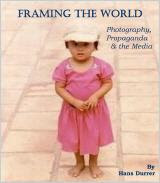"We must learn", writes Tracy Novinger, whose useful tome Intercultural Communication (University of Texas Press, Austin), I have recommended before, "to speak a foreign culture in the same way we must learn to speak a foreign language." She illustrates her argument with this telling example:
"Isaura is an international attorney who practices in the United States and has a Guatemalan father, a Mexican mother, and a North American husband. On a trip to Guatemala to visit family, she was at a party and rose to dance with her brother to some traditional music that always set her feet to moving before she even stood up. Antonio and Isaura made a handsome pair. Isaura executed the intricate footwork to the lively tune, head up, shoulders back, widely flipping her skirt with her hands, turning her body and flashing her eyes to accentuate the measures. Antonio quietly told her, "Isaura, estás bailando muy a la mexicana. Aquí no se baila el son así." (Isaura, you are dancing too much in the Mexican style. Here people don't dance the son like that). Isaura then instinctively adjusted. For some reason, she had not made her cultural switch. She bowed her head slightly and cast her eyes down, put her shoulders forward, held her skirt with her hands close to her hips, and closely reined in the range of her movements. Her whole demeanor changes as she projected the humility customary in traditional Guatemalan folklore."
Wonderfully visual, this writing, isn't it?
"Isaura is an international attorney who practices in the United States and has a Guatemalan father, a Mexican mother, and a North American husband. On a trip to Guatemala to visit family, she was at a party and rose to dance with her brother to some traditional music that always set her feet to moving before she even stood up. Antonio and Isaura made a handsome pair. Isaura executed the intricate footwork to the lively tune, head up, shoulders back, widely flipping her skirt with her hands, turning her body and flashing her eyes to accentuate the measures. Antonio quietly told her, "Isaura, estás bailando muy a la mexicana. Aquí no se baila el son así." (Isaura, you are dancing too much in the Mexican style. Here people don't dance the son like that). Isaura then instinctively adjusted. For some reason, she had not made her cultural switch. She bowed her head slightly and cast her eyes down, put her shoulders forward, held her skirt with her hands close to her hips, and closely reined in the range of her movements. Her whole demeanor changes as she projected the humility customary in traditional Guatemalan folklore."
Wonderfully visual, this writing, isn't it?
Never has it been more obvious to me how different mentalities in Guatemala and in Mexico are - despite that these two countries are neighbours and their people speak the same tongue.



















No comments:
Post a Comment